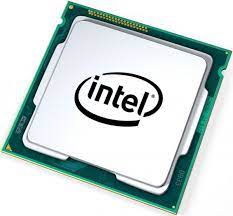How to Match a CPU to Motherboard: A Comprehensive Guide

.jpg)
In the world of computer hardware, one of the most crucial decisions you'll have to make is choosing the right CPU (Central Processing Unit) for your motherboard. This decision can significantly impact the performance and compatibility of your system. In this article, we will provide you with a comprehensive guide on how to match a CPU to a motherboard, ensuring a seamless and optimized computing experience.
Understanding CPU Compatibility
Before diving into the nitty-gritty details, let's first understand the concept of CPU compatibility. Each motherboard is designed to support specific CPU socket types and series. It is essential to match these specifications to ensure a successful fit.
Identifying the Socket Type
The first step in matching a CPU to a motherboard is identifying the socket type. The socket acts as a physical interface between the CPU and the motherboard. Different generations and brands of CPUs use different socket designs, so it's crucial to ensure compatibility.
For example, Intel currently utilizes sockets like LGA 1200 and 1700, while AMD uses AM4 and AM5. Research the CPU socket type supported by your motherboard to determine which CPUs are compatible.
Consider the CPU Generation and Series
Once you've identified the socket type, it's time to consider the CPU generation and series. Manufacturers like Intel and AMD release new CPU models regularly, each belonging to a specific generation and series.
Pay attention to the supported CPU generations mentioned in your motherboard's specifications. Some motherboards may be backward compatible, meaning they support older generations, while others are limited to newer CPUs. It's essential to choose a CPU that falls within the specified range to ensure compatibility.
Power and Thermal Considerations
Matching a CPU to a motherboard goes beyond socket compatibility. Power and thermal considerations are equally crucial factors to examine.
TDP (Thermal Design Power)
TDP refers to the amount of heat generated by a CPU. It is crucial to choose a motherboard that can handle the TDP of your CPU to prevent overheating issues. Check the motherboard's specifications for the supported TDP range and ensure it accommodates your chosen CPU.
Power Delivery
Power delivery is another essential aspect. Some CPUs, especially high-performance ones, may require additional power connectors, such as an extra 4-pin or 8-pin CPU power connector. Ensure that your motherboard has these necessary power connectors to supply sufficient power to the CPU.
Consider Other Factors
While socket compatibility, CPU generation, and power considerations are the primary factors, there are other aspects to consider as well.
Form Factor
Ensure that the physical size of the motherboard matches the computer case you plan to use. Motherboards typically come in different form factors, such as ATX, Micro-ATX, and Mini-ITX. Choose a motherboard that fits your case without any issues.
Expansion Slots and Features
Consider the number and types of expansion slots your motherboard offers. These slots allow you to connect additional components like graphics cards, sound cards, and storage devices. Ensure that your motherboard has enough slots and the necessary features to accommodate your needs.
Conclusion
Matching a CPU to a motherboard is a critical step in building a high-performing and compatible computer system. By considering the socket type, CPU generation, power and thermal requirements, form factor, and expansion slots, you can ensure a seamless and optimized computing experience.
Remember to refer to your motherboard's specifications and thoroughly research the CPU you intend to purchase. By following this comprehensive guide, you'll be well-equipped to make an informed decision and build a powerful computer system tailored to your needs.
